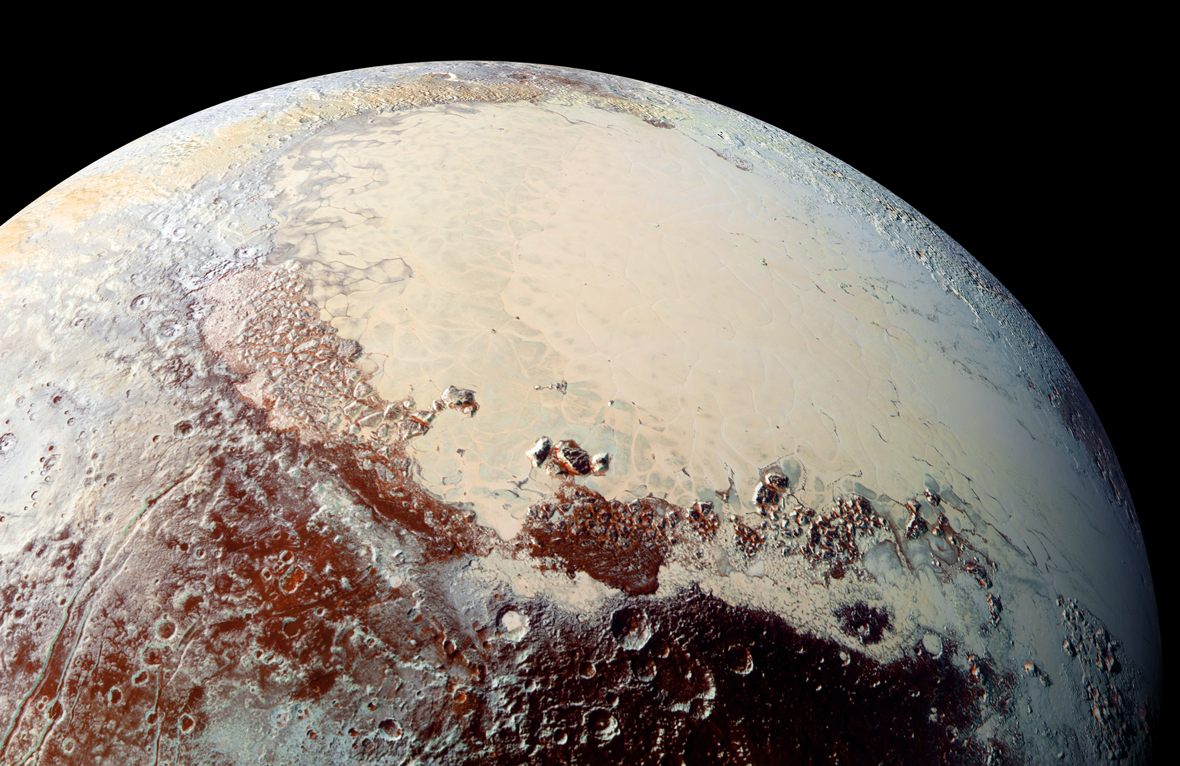Earth and Pluto don’t have much in common. Earth is a vibrant, living world, whereas Pluto is cold, distant and lifeless. But one thing they do have in common is nitrogen. Earth’s atmosphere is about 78% nitrogen, and Pluto’s primary atmospheric constituent is also nitrogen, although the exact percentage is unclear.
On Pluto, where the surface temperature is about 42 Kelvin (-231 Celsius) most of that nitrogen is frozen. A new study says that Pluto’s frozen nitrogen drives the planet’s winds, and shapes its feature surfaces.
Prior to NASA’s New Horizons spacecraft arriving at Pluto, we didn’t know much about the planet or its surface features. When the spacecraft arrived in July 2015, we were all surprised to find that Pluto was a much more active place than we thought. It’s also when we first saw Tombaugh Regio, a large, lightly colored region on the surface of the planet.
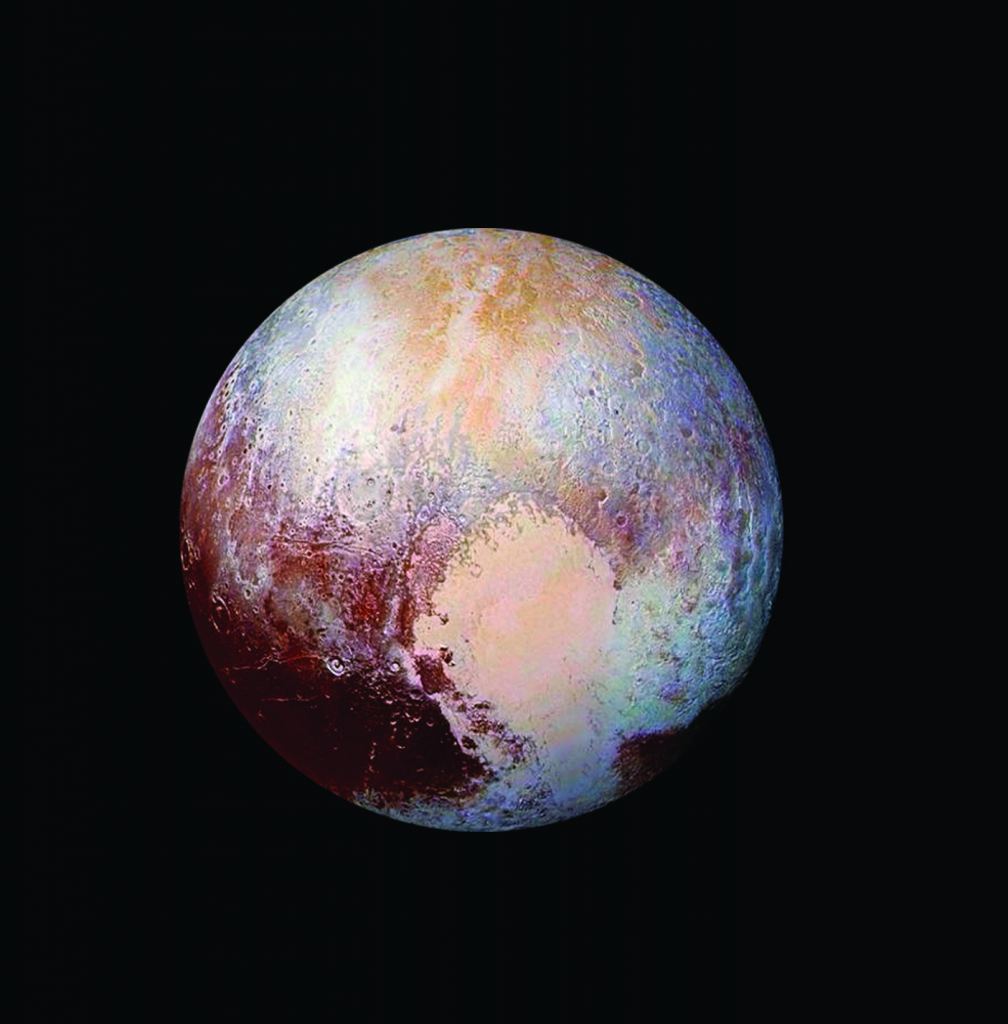
Tombaugh Regio is a very strange place, to human eyes anyway. It has two large lobes that make it look like a heart, and astronomers sometimes call it the “Heart of Pluto.” The western lobe is called Sputnik Planitia, and it features 6200 meter (20,000 ft) high mountains (Tenzing Montes, formerly Norgay Montes) made of water ice, and a vast plain covered in nitrogen ice.
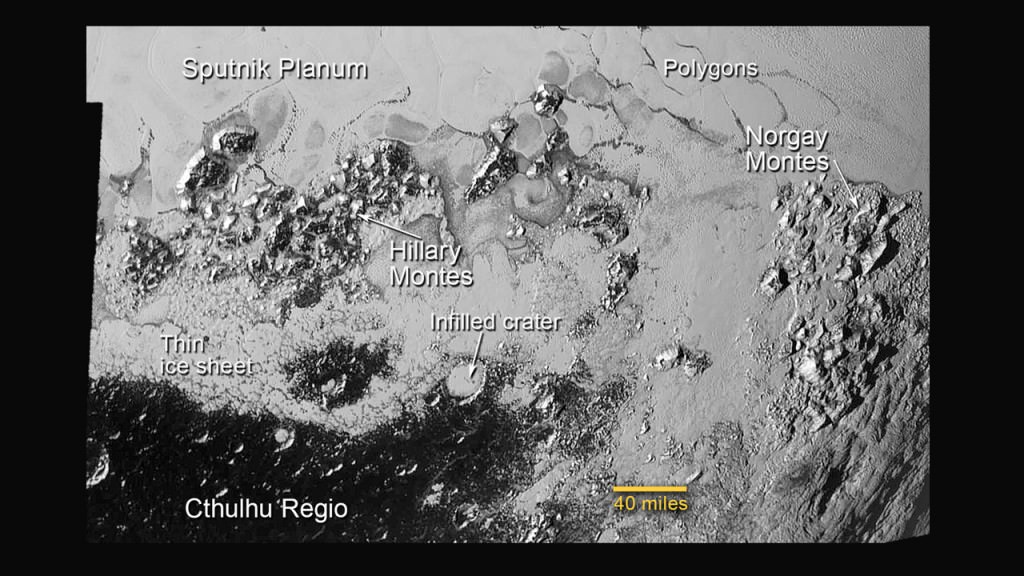
A new paper says that the vast nitrogen deposit in Sputnik Planitia drives Pluto’s winds, and shapes the surface of the planet. The paper is titled “Pluto’s beating heart regulates the atmospheric circulation: results from high resolution and multi-year numerical climate simulations.” It’s published in the Journal of Geophysical Research. The lead author is Tanguy Bertrand, an astrophysicist and planetary scientist at NASA’s Ames Research Center.
“Pluto has some mystery for everybody.”
Tanguy Bertrand, Lead Author, Ames Research Center
Most of Pluto’s thin atmosphere is nitrogen, and there are also small amounts of carbon dioxide and methane. A vast amount of frozen nitrogen sits in Sputnik Planitia, and during the day, the temperature rises enough to sublimate it, turning it into vapor. At night, the process reverses, and the nitrogen freezes again, falling to the surface. Each time the cycle repeats, it acts like a pump, or a “heart-beat”, pumping winds of nitrogen around the planet.
That wind flows in the opposite direction of the planet’s rotation, and it may be responsible for unusual surface features on the planet. As the thin, nitrogen-rich wind blows along the surface, it transports heat, grains of ice and haze particles to create dark wind streaks and plains across the north and northwestern regions.
“This highlights the fact that Pluto’s atmosphere and winds – even if the density of the atmosphere is very low – can impact the surface,” said Tanguy Bertrand, an astrophysicist and planetary scientist at NASA’s Ames Research Center in California and the study’s lead author.
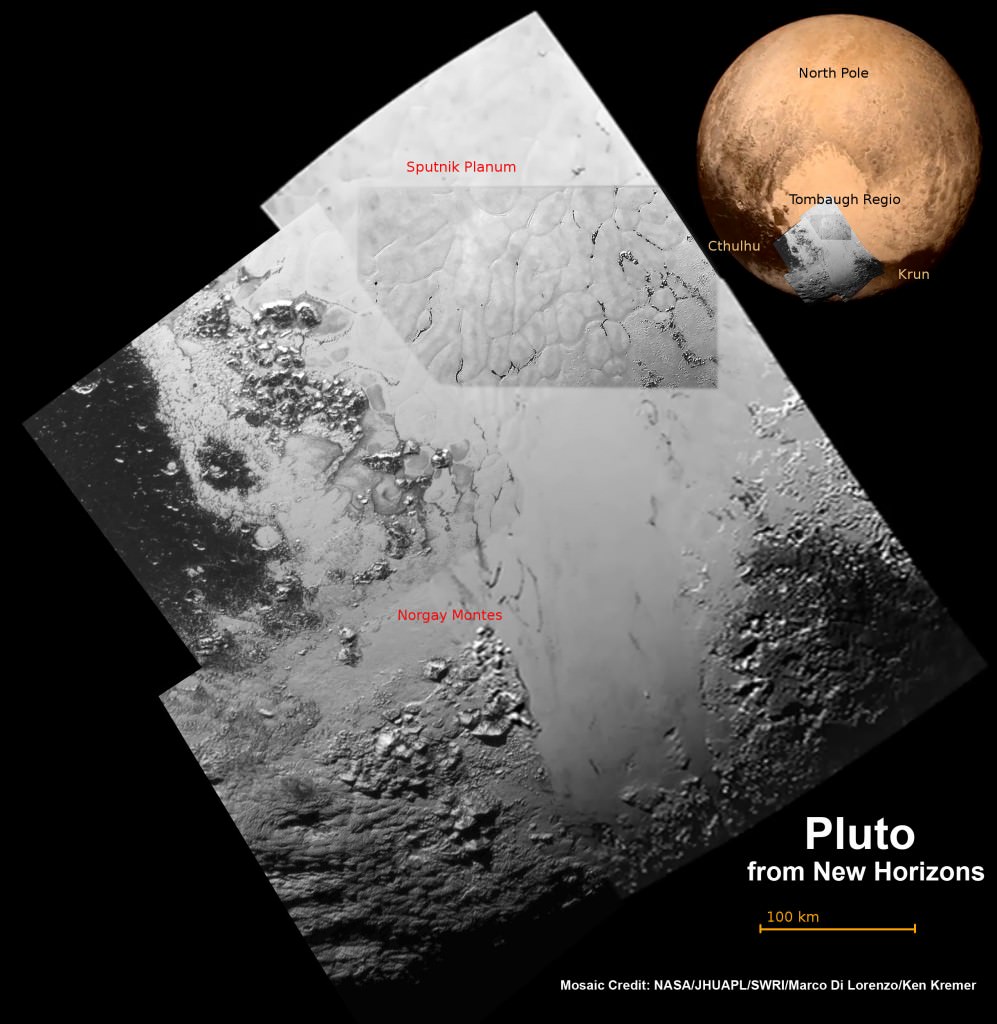
The Sputnik Planitia region, or the left lobe of Pluto’s heart, is lower elevation than the rest of the planet, and it harbors most of the nitrogen. Sputnik Planitia is a 1,000-kilometer (620-mile) ice sheet located in a 3-kilometer (1.9-mile) deep basin. The right lobe is mostly highlands and nitrogen glaciers.
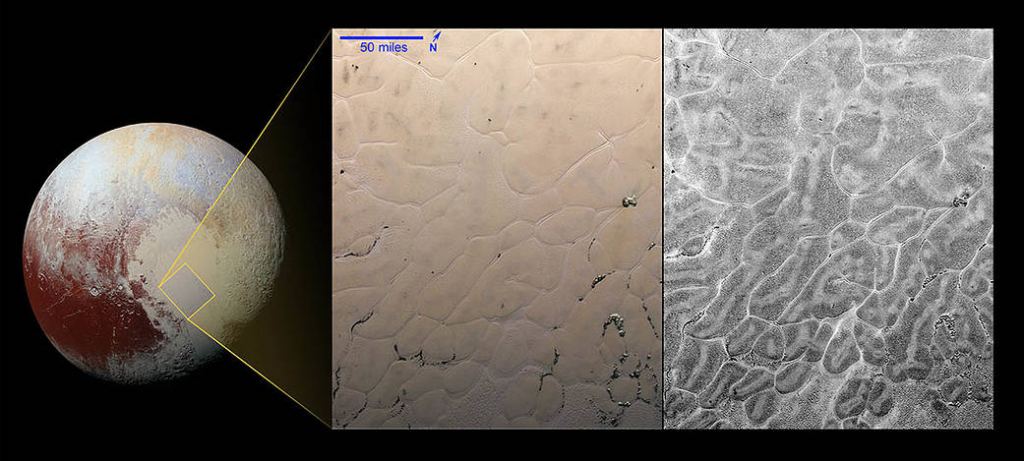
“Before New Horizons, everyone thought Pluto was going to be a netball – completely flat, almost no diversity,” Bertrand said in a press release. “But it’s completely different. It has a lot of different landscapes and we are trying to understand what’s going on there.”
To describe Pluto’s atmosphere as thin is an understatement. It’s about 100,000 times thinner than Earth’s. So how does wind in an atmosphere that thin shape the landscape?
Bertrand’s team took data from the New Horizons flyby of Pluto, and then built a weather forecast model to simulate the nitrogen winds.
The team found that winds above 4 km (2.5 miles) blow to the west, which is in the opposite direction of Pluto’s spin. When frozen nitrogen in Tombaugh Regio sublimates into vapor in the north, then becomes ice again in the south, that movement triggers the westward winds. This situation is likely unique in our Solar System, with the possible exception of Triton, Neptune’s moon.
The researchers found another wind current, too. This one is a strong, fast moving wind close to the surface. It blows along the western edge of the Sputnik Planitia basin. There are similar wind patterns on Earth, that follow the contours of the landscape.
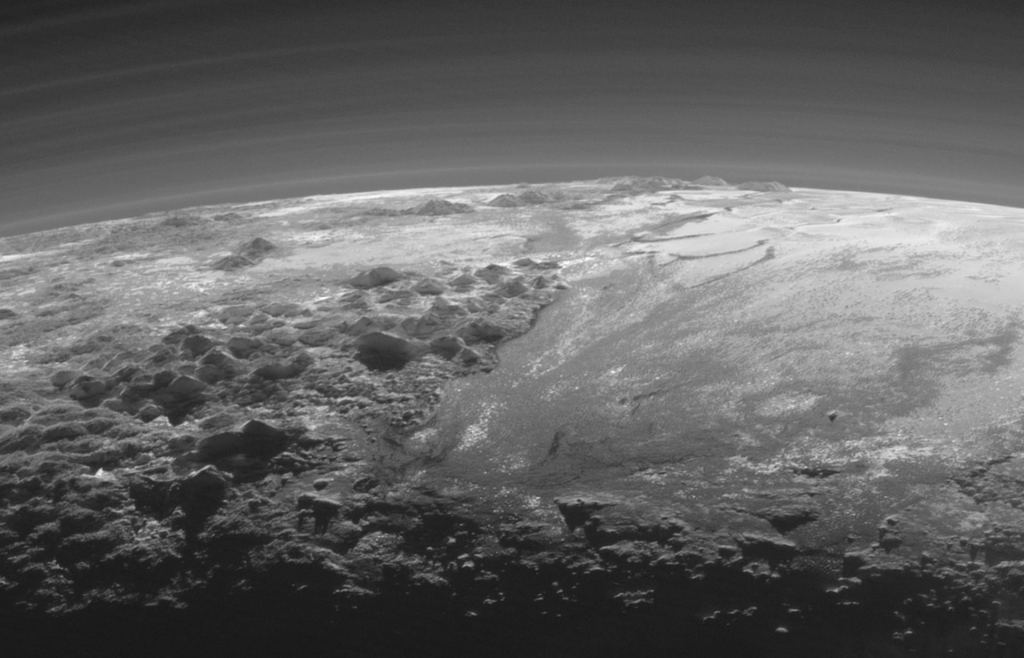
The wind is driven by the nitrogen vapor condensing back into ice, according to the study. The high-elevation cliffs of Sputnik Planitia traps cold air inside the basin. As it circulates there, it becomes stronger.
If Pluto’s nitrogen heart-beat is driving these winds, they might explain the wind streaks and dark plains west of Sputnik Planitia. If the winds bring enough heat to warm the surface, that could cause the streaks and plains. Or it could deposit particles of haze, which can darken and erode the ice. And if the wind blew in the opposite direction—meaning in the same direction as Pluto’s spin—the landscapes could be very different.
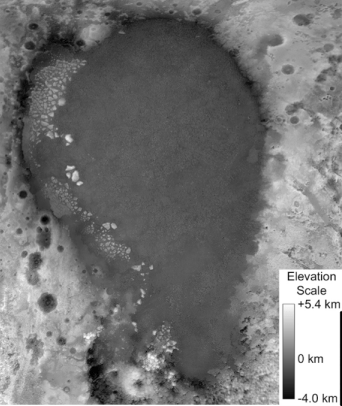
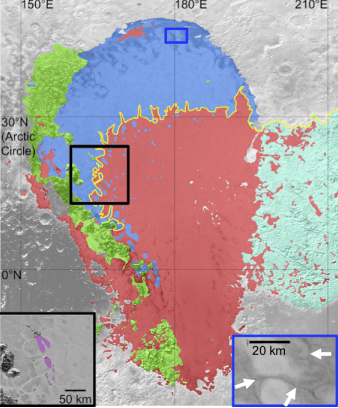
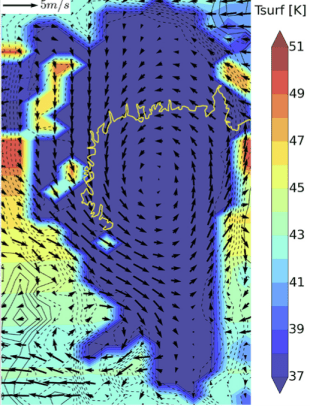
“Sputnik Planitia may be as important for Pluto’s climate as the ocean is for Earth’s climate,” Bertrand said. “If you remove Sputnik Planitia – if you remove the heart of Pluto – you won’t have the same circulation,” he added.
The most “famous feature” on Pluto is probably the bladed terrain. The bladed terrain are fields of skyscraper-sized, jagged land-forms made of primarily methane ice. They’re found at high altitudes near the equator. Could they be an artifact of Pluto’s beating nitrogen heart?
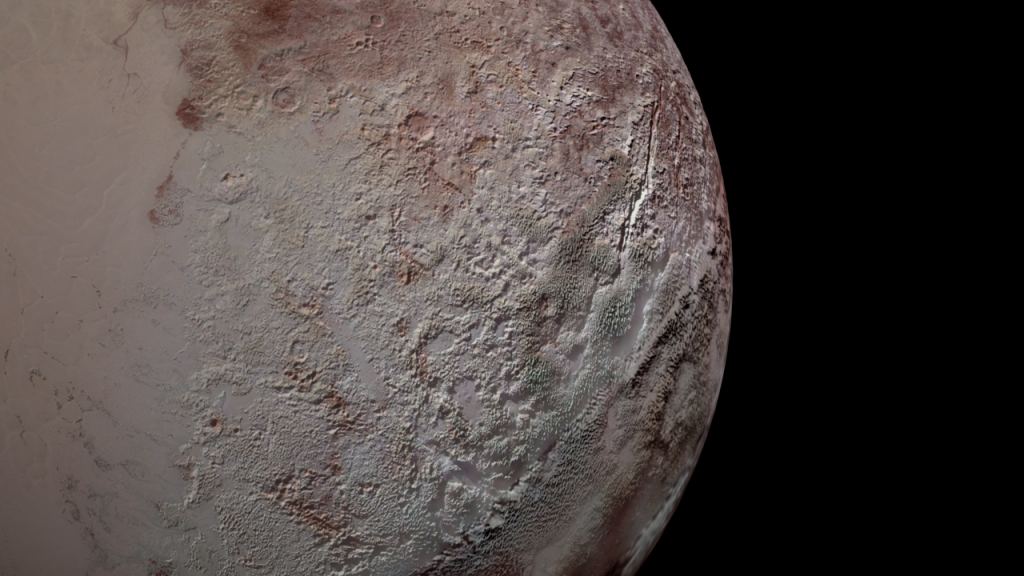
In their paper, the researchers say “… during periods of equatorial accumulation of CH4 (methane) ice, the retro-rotation and the injection of cold N2-rich air from Sputnik Planitia could transport and push gaseous CH4 westward, so that it favors the accumulation of CH4 ice at the westernmost longitudes (that is, east of Sputnik Planitia) leading to the formation of the Bladed Terrain there.”
They also say “… the ridges (”blades“) of the Bladed Terrain deposits display a dominant N-S orientation, which could also originate in part from this peculiar atmospheric circulation regime.”
For now, it seems uncertain if these nitrogen winds could cause the bladed terrain. But the team intends to try and find out. “In the future, we plan to further explore these ideas and investigate the processes leading to these longitudinal asymmetries and peculiar geological formations, by using high resolution long-term GCM simulations.”
In their conclusion, the authors say “Our work confirms that despite a frozen surface and a tenuous atmosphere, Pluto’s climate is remarkably active.” Much more active than anyone probably thought.
New Horizons was unable to enter orbit around Pluto. That’s difficult to do, and that was never its mission. NASA is considering a Pluto orbiter in the future, but in the meantime, everything we learned about the icy dwarf planet, we learned from a single fly-by. Even so, we learned enough to be intrigued, and to want to know more about this fascinating, mysterious world.
“Pluto has some mystery for everybody,” Bertrand said.
More:
- Press Release: PLUTO’S ICY HEART MAKES WINDS BLOW
- Research Paper: Pluto’s beating heart regulates the atmospheric 2 circulation: results from high resolution and 3 multi-year numerical climate simulations
- Universe Today: NASA is Now Considering a Pluto Orbiter Mission

